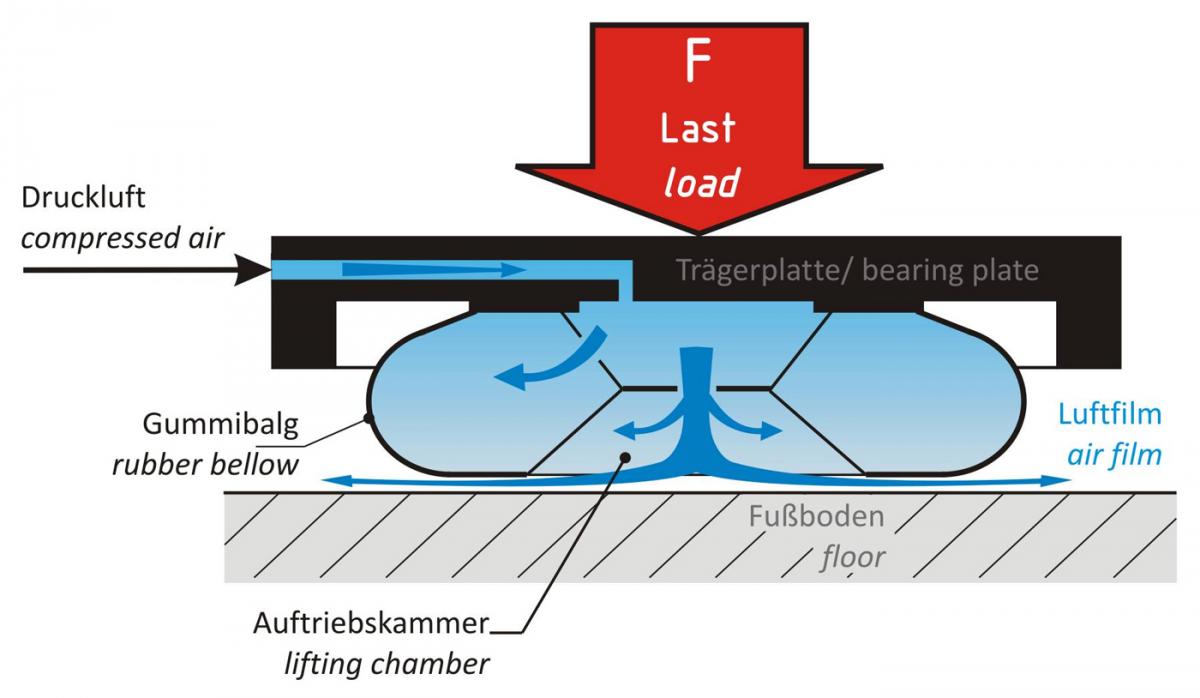working principle of air cushions

Step 1 |
|
In the idle position the load rests on the floor. |
Step 2 |
|
When the air cushion is charged with compressed air, the ring-shaped rubber bellows inflates, sealing the interior from the floor. There, a pressure chamber forms, raising the load. |
Step 3 |
|
As soon as the air pressure in the chamber exceeds the counterpressure of the load, some air escapes into the surroundings of the bellows to form a thin film of air that causes the load to float. The load can now be moved almost without friction in any direction. |
Technical data
| Sizes: | Ø 150 – 1,400 mm (6" - 55") |
| Load capacities: | 150 – 60,000 kg (330 - 132,000 lb) |
| Lifting heights: | approx. 10 – 80 mm (3/8" - 3") |
| Operating pressure: | max.2 or 4 bar (35 or 70 psi) |
| Versions: |
- with integrated support plate - Explosion protected - Wear protection coating - Clean room version |


 Data Sheet: Air cushion elements
Data Sheet: Air cushion elements

